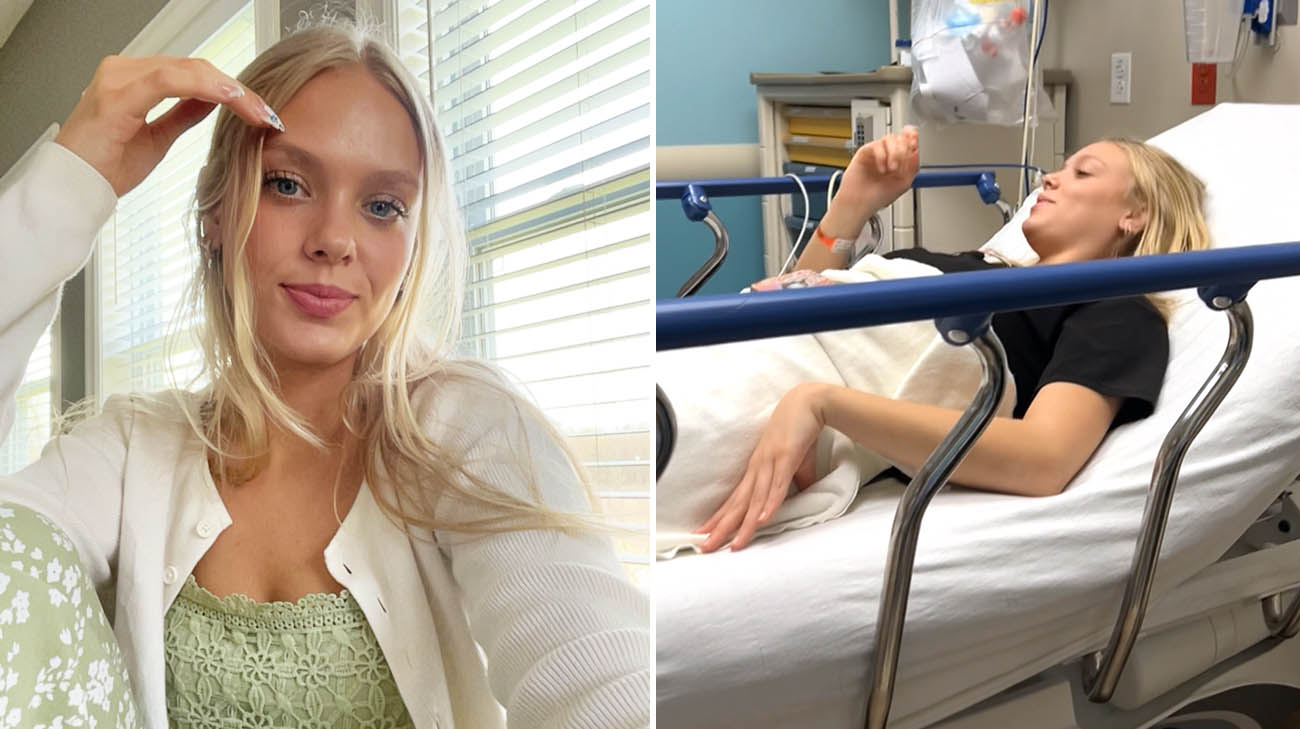
Every day is a blessing for Alexis (Lexi) Eddy, a view on life she gained after suffering a stroke in March 2025 at just 18 years of age.
“Before my stroke, I was wasting my time and energy on things I shouldn’t be. I wasn’t happy,” says Lexi, who will graduate from Waterloo High School in Atwater, Ohio, in May, just two months after collapsing at her after-school job in a senior living facility. “After my stroke, I realized you can’t take what you have for granted.”
“Life is going to be both hard and good,” she adds, “and I want to do everything for the greater good. Anything that brings joy to other people is what I want to be doing.”
Lexi had never had any serious health issues until a clogged artery interrupted the flow of blood to her brain, causing an ischemic stroke. It occurred quite suddenly, while working with a new employee she was training at a center for rehabilitation and nursing care.
The first clue something was amiss was her inability to pull off the cap on a pen. “Then a big wave of lightheadedness went right through me. I started to fade off and couldn’t feel anything in my left hand, and I had a really bad headache.”
When Lexi tried to speak to her colleague, the young woman couldn’t understand what she was saying. And then, Lexi fell off her chair. Still conscious, Lexi tried to reach her mom, Melissa, through a social media app. But Melissa was driving home from her job as an occupational therapist, and wasn’t able to respond until her phone rang.
“There was a young lady on the phone who said: ‘I just want to let you know the ambulance is here, and they’re going to transport Lexi to the hospital,’” Melissa recalls. “She told me Lexi’s face was drooped, she couldn’t talk, and she couldn’t feel or move anything on her left side.”

Lexi never had any serious health issues until she experienced an ischemic stroke.(Courtesy: Lexi Eddy)
Melissa sped to the small, local hospital and was there when Lexi arrived. Within minutes, doctors determined she had suffered a stroke and immediately arranged for her to be transported for specialty care at Cleveland Clinic Akron General.
Within minutes after Lexi arrived there, a team of doctors, nurses and specialists examined her and quickly administered a CT scan (which revealed no bleeding) and a CT angiogram, which pinpointed the blood vessel on the right side of her brain that was occluded, or blocked.
According to neurologist Yousef Mohammad, MD, who oversaw Lexi’s assessment and treatment, quick action was necessary to remove the clot so blood flow to the brain could resume unimpeded.
“We use the term ‘time is brain’ because early intervention is essential,” explains Dr. Mohammad, who is part of Cleveland Clinic’s multidisciplinary Cerebrovascular Center. “Every minute that passes without opening the blocked vessel, one million neuron cells will die. That’s why we act very quickly to try and open the vessel and restore blood flow to the brain.”
Doctors swiftly administered an intravenous injection of TNK-tPA (tenecteplase), a medication that can dissolve blood clots in the occluded blood vessel. Within minutes, Lexi was taken to get another CT scan to determine if the medication was working.
In the meantime, the stroke team explained to Melissa and Brian, Lexi’s dad, that they were prepared to perform a percutaneous mechanical thrombectomy if the medication didn’t work. A minimally invasive procedure, the thrombectomy involves routing a catheter from the groin area, through the femoral artery, to the site of the blood clot. Once there, blood flow is restored by either suctioning or aspirating the clot or using a specialized device that expands within the blood vessel to remove the obstruction.
As Melissa recalls, “It felt like 90 minutes of pure craziness. It was overwhelming for us, because it was such an emergency situation. But everyone at the hospital was amazing, from the staff to the doctors to the nurses. They are so thorough, considerate, kind and empathetic.”
Fortunately, the CT results revealed the medicine had dissipated the clot. “The second I got out of the CT scan, a nurse came over and squeezed my hand. Before that, my dad had been holding my hand, and I hadn’t felt anything. But this time, I said, ‘Oh, wait I can feel it now.’ The feeling wasn’t 100% yet, but it was much better than before.”

Lexi was able to make it to prom. (Courtesy: Lexi Eddy)
Over the next four days she spent in the hospital, Lexi regained almost all the feeling and use of her left side, and the minor facial drooping, slurred speech and headaches ended. During that time, Dr. Mohammad and team began the next phase of her treatment – conducting a thorough evaluation to identify the underlying cause of the clot that triggered Lexi’s stroke.
A series of tests ruled out several possible causes, among them tumors, an irregular heartbeat, blood deficiencies and other factors. All were negative. One issue the care team identified was a heart condition called patent foramen ovale (PFO), a small hole or flap between the upper right and left chambers of the heart. While PFO is present in about 20-25% of the population, it can sometimes increase the risk of stroke, especially in younger people.
“Because a PFO is so common, we have to eliminate every other possible cause,” explains Dr. Mohammad. “Once we do that, we are left with PFO and then decide if there is a relationship between the PFO and the stroke.”
Doctors administered a Risk of Paradoxical Embolism (RoPE) test to assess the likelihood that PFO caused Lexi’s stroke. The RoPE score revealed an 88% probability that her stroke was caused by PFO.
One month after her high school graduation and before she begins attending Kent State University to pursue a teaching degree, Lexi will undergo a minimally invasive procedure at Cleveland Clinic to close the PFO – which Dr. Mohammad expects will virtually eliminate any chance of stroke recurrence from the PFO.
As she waits for graduation, and her heart procedure, Lexi – a budding photographer -- feels she is almost back to normal. “Just doing things like driving with my friends, with the windows down, listening to music. This experience has definitely changed my perspective.”
Related Institutes: Neurological Institute

